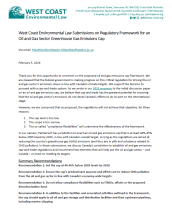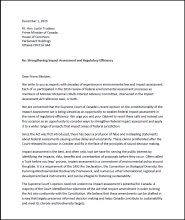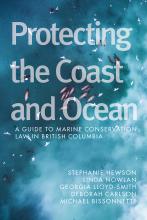Publications
Browse our recent publications, including reports, briefs, submissions to government, and other materials.
Use the search criteria to filter by topic, date, author and/or keywords.
Publication Date: February 2024
Pages: 7
Topics: Oil and gas emissions cap, climate crisis, climate solutions
Publication Date: February 2024
Pages: 7
Topics: Marine protection, ocean conservation, marine renewable energy, offshore oil & gas production
Publication Date: January 2024
Pages: 9
Topics: Biodiversity and Ecosystem Health, Indigenous Protected and Conserved Areas (IPCAs)
Publication Date: December 2023
Pages: 4
Topics: Impact Assessment Act, environmental assessment, Supreme Court of Canada
Publication Date: November 2023
Pages: 32
Topics: Flood recovery, climate adaptation, reconciliation
Publication Date: September 2023
Pages: 9
Topics: Climate change, emissions cap, oil and gas emissions
Publication Date: July 2023
Pages: 3
Topics: national marine conservation areas, marine protected areas, minimum protection standards
Publication Date: June 2023
Pages: 200
Topics: Land; Conservation; Private options
Publication Date: June 2023
Pages: 300
Topics: Marine Protection, Coastal and Ocean Laws
Publication Date: April 2023
Pages: 10
Topics:


